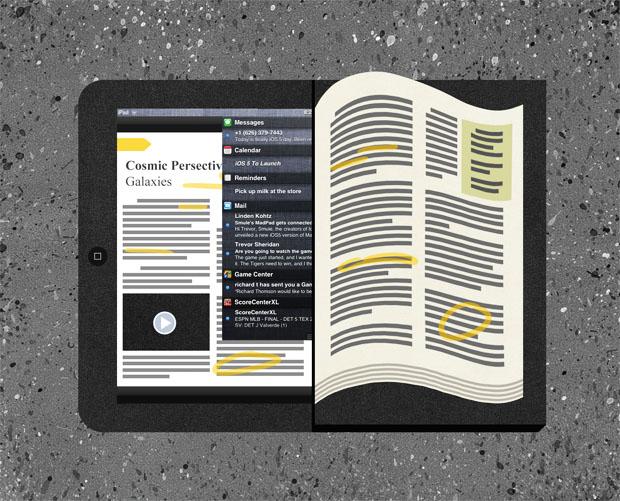
CSUN is apparently stepping into the 21st century with a program that on its face holds much promise, but after serious consideration leaves too many questions unanswered.
The pilot program currently being considered would allow for classes to integrate Apple’s iPad into a curriculum. The professor would oversee how and to what extent the iPads’ would be used, as well as having an opportunity to publish their own content in the place of traditional textbooks, through Apple’s proprietary eBook publishing branch.
There is no doubt that technology is a key component of the classrooms that exist now and in the future, but as a student here I’ve observed situations that call into question the longterm viability of access to electronic devices during class time, as well as the single platform approach of strictly using Apple products. It’s an interesting idea but ultimately is bound to fail in some regards.
I love Apple products. I own a multitude of their devices and am entirely integrated into their product line. I’m happy to pay the so-called Apple tax for the piece of mind a quality designed product offers. I also understand that a lot of people feel otherwise and invariably choose alternate formats like Android, PC, Windows, Linux and the list just goes on. The lack of choice in this regard is not beneficial from a consumer or quality standpoint. Apple doesn’t always get everything right, and by having students exist in a closed digital ecosystem, their ultimate choices are limited and that’s too restrictive in a community where mostly free thought is encouraged.
An equally pressing concern for an always financially-strapped populace like college students is the price point. On the university’s web-page for this program, the price-point is listed as, “all entering students to participate for as little as $75 per semester for two years.”
My limited math skills as a journalism major tell me that after two years you’ll have paid $300 for the privilege of owning an iDevice. There are no details about what specific model and device you are receiving. Is it an iPad Mini, or the Retina model? Is it the base version with a minimal 16 GB of memory? If it is the most basic model that Apple offers, the starting price on their site has the 16 GB iPad 2 listed at $399. While saving money on a product is always nice, the discount associated with this is practically mundane when compared with the longterm benefits to Apple as a company, and I assure you, they will make a boatload of money. The biggest concern with this pricing point is that someone is subsidizing the cost and if it is our university, where is that money coming from?
Ironically, Apple has a generous student discount program that doesn’t quite match-up to this apparent slashing in price, but they also don’t have iPad’s as inclusive products for their 10 percent student discount, which seems to run contrary to their plans, in regards to their flagship product and its proposed integration into higher learning.
The info page on this program is lacking many serious details. Is Apple Care included in our purchase? What happens if my device breaks and my ability to effectively participate in class is hampered because I can’t afford to repair or fix the iPad? These are questions that need to be addressed before this proposal can be taken seriously.
While many of the concerns expressed are of a financial matter, there are still logistical issues with implementing and maintaining a seemingly revolutionary program.
The most pressing issue observed in current classrooms is the most basic one; many professors on campus have a general disdain for tech use during their lectures. It’s understandable, as often, students are bored by a long class and while the initial intent of using a laptop, tablet or smartphone to enhance note-taking or quick access for internet research is admirable, almost everybody is enticed to check Facebook or Twitter, or a multitude of any type of internet content to assuage the tedious and awful boredom of lectures, notes and powerpoint presentations. Professors use these habits to exclude digital interaction in their classes and even though there is some merit there, the extremes they take to keep students unplugged reaches epic proportions.
Professors need to change their archaic views on attention spans and realize that students and society in general are integrating the digital world into the real world. For better or worse it’s an inevitability and professors need to play along.
This program has some potential but as it stands right now, the answers are thin and reek of generic PR speach, cobbled together by Apple’s internal sales team. Until there is more substantial information I say we pass on this supposed opportunity.






